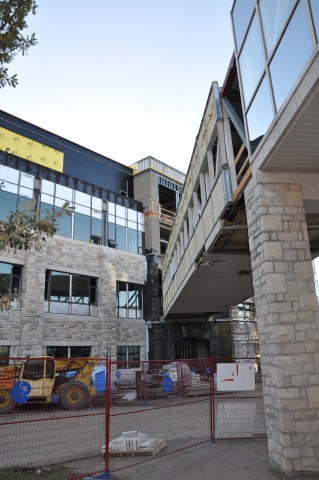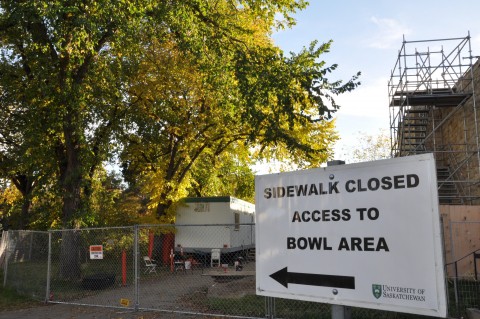The University of Saskatchewan’s main campus is a beautiful place — thanks to a coherent esthetic maintained throughout its 110 years. Unfortunately, the respect given to the campus’s exterior is not extended to its interior, where decades of shortsighted renovations have erased swaths of historical character.
There are two distinctly different approaches that the university can take when it comes to aging and deteriorating spaces on campus — restoration or updating. As you walk through campus, it is easy to see examples of both.
The Memorial Union Building opened in 1955 to become the hub of student life, moving disparate student organizations to a single building. Initially, the MUB served as home to the Sheaf, the student union offices, a cafeteria on the main floor, a students’ lounge upstairs and the campus radio station CJUS-FM — now CFCR.

Modernizing a space has to happen more than once.
The upper floor of the MUB, for example, demonstrates the effects of the updating approach. The current face of the upper floor, unveiled in 2013, is Louis’ Loft — an extensive $750,000 renovation that replaced the dated and dingy Browsers Café.
When spaces are approached from the angle of updating them, an expensive cycle of renovation begins — spaces become dated relatively quickly and require total replacement. This also arguably removes the opportunity for a space to develop a soul. Yes, the Loft is a nice enough space, but it doesn’t really feel like there has been a student lounge up there for more than 60 years. I think some of that history is worth highlighting.
In contrast to the MUB, we have the Thorvaldson Building’s Airplane Room. A $140,000 restoration project undertaken in 2014 was done with respect for the room’s history and character. Upon entering the space and taking a seat in its terribly uncomfortable chairs, it is hard to ignore just how many people have been there before you.
There are more tangible benefits to the restoration approach as well. Because the space has been allowed to age, it’s taken on a timeless quality. And while money still needs to be spent on repairs, the costs tend not to approach the magnitude of total replacement.

Updating the interior design on campus is a move that I would call mostly shortsighted. In buildings like the MUB, once the cycle of renovation starts, it’s very difficult to stop.
The space is already beginning to show it’s age and will only continue to do so, but it won’t take on the same qualities displayed by the Airplane Room, because it’s now too removed from the history of the space.
I’m not asking for a revert back to its harkened esthetic glory days — a restoration to its initial state would be an expensive undertaking with a chance of falling flat — but I urge decision-makers to exercise caution when approaching future renovations of the campus’s many dingy spaces.
—
Liam Delparte
Photos: Stephanie Witham